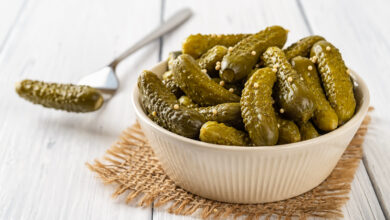
Elevate Your Spread: A Guide to Crafting Irresistible Homemade Whipped Butter
In the realm of culinary delights, few things rival the rich, velvety texture and exquisite taste of whipped butter. While store-bought options are readily available, crafting your homemade whipped butter allows you to tailor the flavor and consistency to your liking. In this guide, we will embark on a journey through the simple steps and creative possibilities of making homemade whipped butter, turning a basic kitchen staple into a luxurious and personalized treat.
Understanding Whipped Butter:
Before delving into the process of making homemade whipped butter, it’s essential to grasp the essence of this culinary creation. Whipped butter is essentially butter that has been beaten or whipped to incorporate air, resulting in a light, airy, and spreadable consistency. This transformation not only enhances the butter’s texture but also allows it to be easily spread over bread, rolls, or any other culinary canvas.
Key Ingredient: Unsalted Butter
The primary ingredient for homemade whipped butter is high-quality, unsalted butter. Using unsalted butter provides the flexibility to control the salt content, allowing you to customize the flavor profile to suit your preferences. Opt for a premium butter with a higher fat content for a creamier and more luxurious end product.
Tools of the Trade:
To embark on your whipped butter-making journey, gather the following tools:
- Stand Mixer or Hand Mixer:
- A stand mixer with the whip attachment or a hand mixer is crucial for incorporating air into the butter. The beating action whips the butter into a light and fluffy consistency.
- Measuring Utensils:
- Accurate measurements are key to achieving the desired balance of ingredients. Have measuring cups and spoons on hand.
- Bowl:
- A mixing bowl, preferably stainless steel, is ideal for whipping the butter. Ensure it is clean and at room temperature.
- Flavor Enhancements (Optional):
- Additional ingredients such as sea salt, honey, herbs, or spices can be added to elevate the flavor profile of your whipped butter.
The Homemade Whipped Butter Process:
Now, let’s dive into the step-by-step process of making homemade whipped butter:
Step 1: Ingredients Preparation
Gather the following ingredients:
- 1 cup (2 sticks) unsalted butter, softened
- Optional: Sea salt, honey, herbs, spices for flavor enhancement
Step 2: Softening the Butter
Ensure that the butter is at room temperature before beginning the whipping process. Softening the butter makes it easier to whip and results in a smoother texture. Leave the butter out for approximately 30 minutes or use a microwave at low power in short intervals, checking frequently to avoid melting.
Step 3: Whipping the Butter
- Place the softened butter in the mixing bowl.
- Using the whip attachment on a stand mixer or beaters on a hand mixer, start whipping the butter on low speed.
- Gradually increase the speed to medium-high as the butter becomes softer and more pliable.
- Continue whipping for 5-7 minutes or until the butter turns pale in color and achieves a fluffy, airy consistency.
Step 4: Flavor Customization
- If desired, add flavor enhancements to the whipped butter. For a classic touch, sprinkle in a pinch of sea salt. For a sweet variation, incorporate honey or maple syrup. Experiment with herbs like chives or thyme, or spice it up with a dash of paprika or garlic powder.
- Mix the added ingredients into the whipped butter until evenly distributed.
Step 5: Storage
Transfer the whipped butter to a clean, airtight container. Store it in the refrigerator for a firmer consistency or keep it at room temperature for a softer spread.
Creative Variations:
Now that you have mastered the basic process of making whipped butter, let your culinary creativity flourish with these delightful variations:
- Honey Cinnamon Whipped Butter:
- Add a teaspoon of honey and a pinch of ground cinnamon to the whipped butter for a sweet and warmly spiced spread.
- Herb-infused Whipped Butter:
- Incorporate finely chopped fresh herbs like parsley, chives, and thyme for a savory and aromatic butter that pairs well with bread or baked potatoes.
- Citrus Zest Whipped Butter:
- Grate the zest of an orange, lemon, or lime into the whipped butter for a citrusy burst of flavor. Ideal for spreading on scones or muffins.
- Spicy Chipotle Whipped Butter:
- Stir in a small amount of chipotle powder or finely minced chipotle peppers for a smoky and spicy kick. Perfect for adding a bold flavor to grilled corn or Mexican dishes.
- Vanilla Bean Whipped Butter:
- Scrape the seeds from a vanilla bean and fold them into the whipped butter along with a touch of powdered sugar for a decadent topping for pancakes or waffles.
The possibilities for flavor variations are endless, allowing you to tailor your whipped butter to complement various dishes and occasions.
Tips for Success:
- Consistent Softening: Ensure that the butter is evenly softened throughout to achieve a uniform texture in the whipped butter.
- Room Temperature Mixing: Both the mixing bowl and the butter should be at room temperature to facilitate smooth whipping and blending of flavors.
- Gradual Flavor Incorporation: When adding flavor enhancements, incorporate them gradually to taste, ensuring that the overall balance is to your liking.
Conclusion:
Making homemade whipped butter is a delightful and rewarding culinary adventure that elevates a simple ingredient into a luxurious spread tailored to your taste. With just a few key tools and high-quality butter, you can craft a versatile condiment that adds a touch of sophistication to your daily meals.
Experiment with flavors, try different variations, and enjoy the process of creating a personalized whipped butter that will undoubtedly become a staple in your kitchen. Elevate your spread, savor the light and airy texture, and relish the satisfaction of crafting a culinary masterpiece with each batch of homemade whipped butter.



